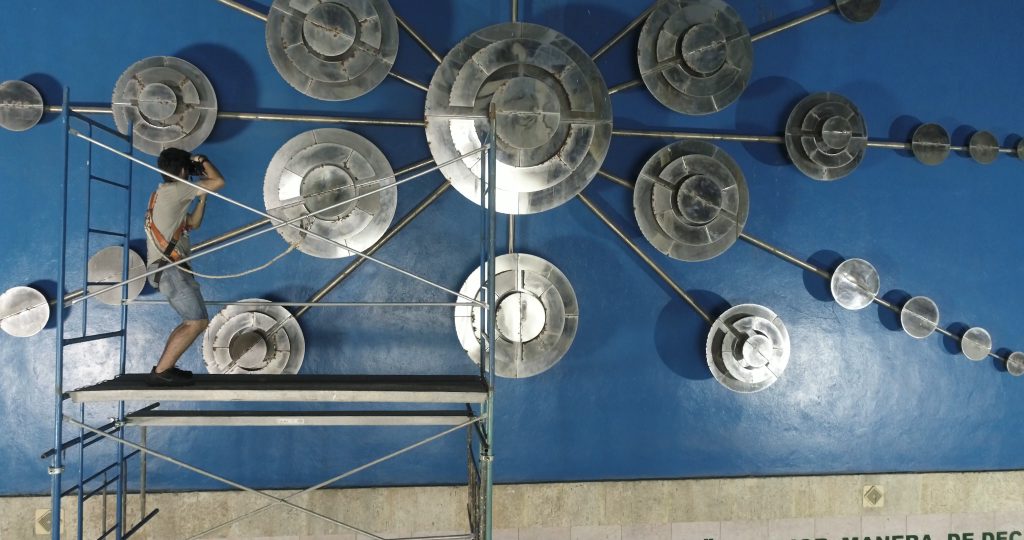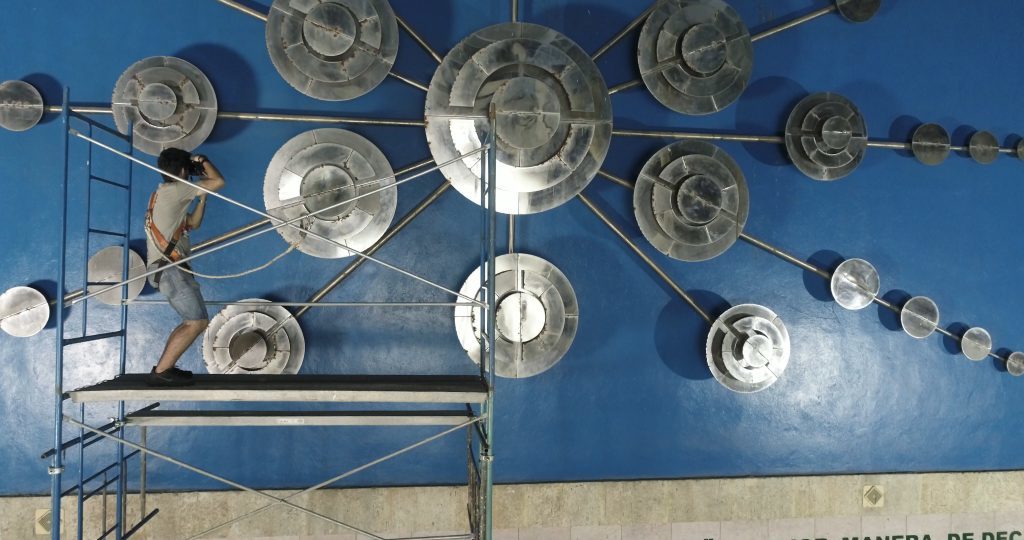Watching in awe as artists bring their visions to life in mixed reality

I’ll never forget the first time I experienced mixed reality.
It was a pre-production version of Microsoft HoloLens, and I tried a demo that had fish swimming around the room, seaweed on the floor and bubbles floating around me. Eventually, the demo team had to gently suggest I leave, because I was mesmerized. The fish were bouncing off the walls. The bubbles were popping on the ceiling. I could see everything in the room and the people in it, and I could see more – things that felt just as real. I couldn’t get enough.
Part of me is still in that moment because it’s what has motivated me to work as hard as I can with teams across Microsoft to build the devices, platforms, experiences and services that will enable infinite mixed reality experiences.
Everyone working in mixed reality today is a pioneer as they push forward, defining boundaries of technology, design and user experience while reinventing industries, education and communication.
Today, I want to talk about one group of pioneers who are using mixed reality to change the way we see the world: artists.
Since the early days of HoloLens, we have had the chance to see what happens when artists use their unique ability to see the potential of a new medium or technology. I have always been passionate about paying attention to what artists are doing with new technology platforms. Artists, whether visual artists, media, sculpture, dance, theater or others, have both courage and the ability to see things differently.
It has been amazing to see what has been created.
Cisneros Fontanals Art Foundation Exhibit at Art Basel
Last week we kicked off a partnership with Cisneros Fontanals Art Foundation (CIFO) at Art Basel in Miami. Their exhibit, “Sandu Darie: An Immersive Experience,” aims to make important Cuban works of art accessible beyond the constraints of their physical location. The experience makes available public works of art that are permanently located in Cuba and brings them to life using Mixed Reality Viewer, Windows Mixed Reality headsets and HoloLens. For the first time outside of Cuba, visitors could view large-scale works of art in their real world through these two immersive experiences.
A photographer captures images of Cuban artist Sandu Darie’s El Día y La Noche (1982) in Havana that were used to digitally recreate the sculptural mural as a hologram
Case Western Reserve University mixed reality dance shared experience
Case Western Reserve University has truly been a pioneer in mixed reality. From the building of anatomy class experiences, to expanding to physics classes, and more recently exploring the arts with the British Museum and others, the team at Case has been leading from the edge.
I recently had the opportunity to have another once-in-a-lifetime experience: the first-ever, large-scale shared mixed reality dance performance. Eighty people all wore HoloLens to see dancers and holograms in the same performance, for the first time. The team had no idea how to pull this off when it was conceived by the Creative Director, but that’s why we’re in this space: to bring things that seem impossible into focus, and then to just figure out how to do them.
Take a look at their blog post and video to learn more about how the vision ultimately came to life.
Cornish College of the Arts
I spent two years in early HoloLens development saying, “Imagine when you go to the first holographic art gallery opening. There will be wine and cheese, maybe some light music, but no art. You walk in and see empty walls, empty stands. But then you put on HoloLens and the gallery is full of rich art.”
I would marvel over this with other people.
Well, this has happened, and much earlier than I expected.
Cornish College of the Arts pioneered the first exhibit in 2016, called “Through the HoloLens,” which allows students to bring to life their artistic expression in new ways through painting, dance, performance and other forms. I was fortunate to experience this firsthand with the students of Cornish, a moment I will never forget.
Gallery goers check out students’ holographic works at the Cornish College of the Arts 2016 BFA show
Artsy at the Armory
Earlier this year we partnered with online art platform Artsy and Amsterdam-based Studio Drift to create a mixed reality art installation at The Armory Show in New York. The project was called “Concrete Storm” and was our first collaboration in a commercial art context. It blended physical structures with holograms, which changed perspective depending on where you stood within the exhibit, allowing visitors to experience art in an entirely new way. It was fascinating to watch the typically jaded New York art crowd’s expressions the first time they put the device on; lighting up as they walked through the concrete pillars and reaching out to touch something that wasn’t really there. Proof that mixed reality can make art more accessible and interactive when it comes alive, up close and personal.
Studio Drift founders Lonneke Gordijn and Ralph Nauta view their original HoloLens work, Concrete Drift (2017), at The Armory Show in New York
I’d like to thank all working artists for your commitment to your craft and work. And for those of you who are deeply engaged with technology, thank you again. Your work is so very important. As we get ready for the year ahead I am eager to see what comes next.
Lorraine
Source: Watching in awe as artists bring their visions to life in mixed reality
